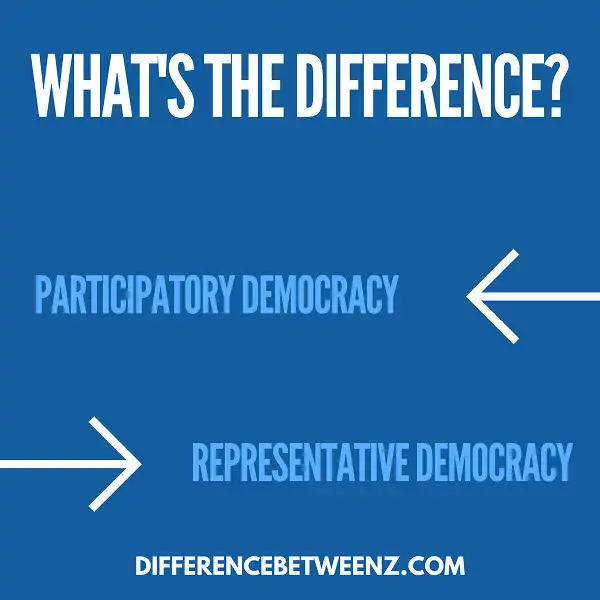In a democracy, citizens have a say in the decisions made by their government. There are two main types of democracies: participatory and representative. Participatory democracies allow citizens to directly participate in making decisions, while representative democracies elect representatives to make decisions on behalf of the people. There are pros and cons to both systems, but which type is best for your country depends on your specific situation.
What is Participatory Democracy?
Participatory democracy is a political system in which ordinary citizens are actively involved in the decision-making process. Participatory democracy is often contrasted with representative democracy, which gives greater power to elected officials.
- In a participatory democracy, citizens participate directly in the democratic process, typically through town meetings or referendums.
- Participatory democracy is thought to promote greater civic engagement and can be used to make decisions on a wide range of issues, from local planning decisions to national policy.
- Participatory democracy is not without its critics, who argue that it can lead to gridlock and does not always reflect the will of the majority.
However, supporters of participatory democracy argue that it is a more democratic form of government and helps to ensure that all voices are heard.
What is Representative Democracy?
Representative democracy is a type of government in which people elect officials to represent them. These officials then make decisions on behalf of the people they represent.
- Representative democracy is different from direct democracy, in which people make decisions about government policy directly.
- Representative democracy is also different from authoritarianism, in which one person or group has absolute power.
- Representative democracy is a compromise between these two extremes.
- It allows people to have a say in government policy, while still giving officials the power to make decisions and carry out policies.
Representative democracy is the most common form of government in the world today. Countries with representative democracies include the United States, Canada, and many European countries.
Difference between Participatory Democracy and Representative Democracy
Participatory democracy and representative democracy are two different types of democracies. In a participatory democracy, all citizens have a say in the decisions that affect them, either directly or through elected representatives. In a representative democracy, citizens elect representatives to make decisions on their behalf.
- Participatory democracy is more direct, while representative democracy is more indirect. Participatory democracy is more participatory because all citizens have a say in the decisions that affect them. Representative democracy is more representative because it involves electing representatives to make decisions on behalf of the citizens.
- Participatory democracy is more democratic because it gives all citizens a say in the decisions that affect them. Representative democracy is less democratic because it gives some people more power than others.
- Participatory democracy is more egalitarian because it gives all citizens an equal say in the decisions that affect them. Representative democracy is less egalitarian because it gives some people more power than others.
- Participatory democracy is more effective because all citizens have a say in the decisions that affect them. Representative democracy is less effective because not all citizens have a say in the decisions that affect them.
Participatory democracy is more efficient because all citizens have a say in the decisions that affect them. Representative democracy is less efficient because not all citizens have a say in the decisions that affect them. Participatory democracy is better than representative democracy because it gives all citizens a say in the decisions that affect them.
Conclusion
Although it is important to have a system where the people can elect their leaders, representative democracy has its flaws. A participatory democracy allows for more citizen engagement and could lead to better policies. However, implementing a participatory democracy is not easy. It would require changes in how we currently do things, from voting to campaigning. We need to start thinking about ways that we can make our government more participatory so that everyone has a say in what happens.


